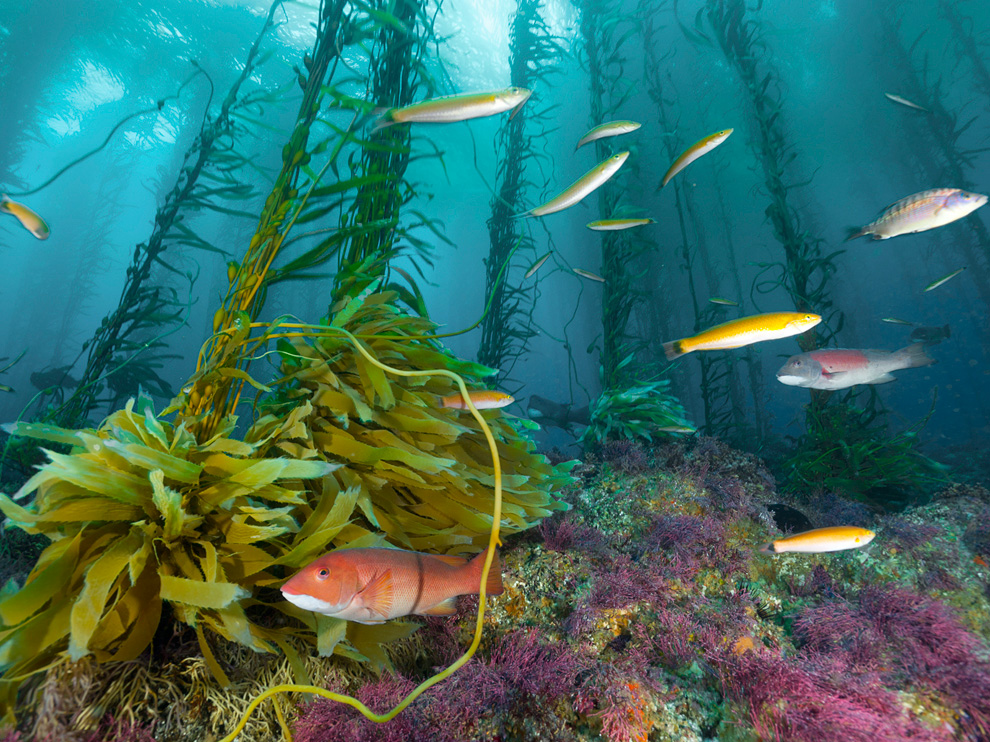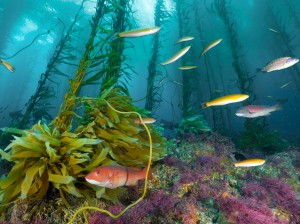
The term “algae” does not refer to a single taxonomic group but instead comprises a diverse array of species, from prokaryotic cyanobacteria to many types of unicellular and multicellular eukaryotes. It’s well known that algae make great contributions to sustaining the diversity and productivity of our natural world. It has been estimated that the number of algae species could range from 30,000 to more than 1 million. So it’s not surprising to find that algae, so high in diversity and abundance, have significantly altered the appearance of our planet.
Just as plants add colour to our terrestrial world, algae are responsible for the diverse colours of many aquatic systems. Without the existence of macroalgae, most marine zones would be barren places and we would miss the beauty of park-like intertidal zones and magnificent marine forests comprised of gigantic algae such as the Giant kelp (Macrocystis pyrifera). In the shallow zone of rivers and lakes, attached filamentous macroalgae can flourish when the pressure of competition from aquatic plants is low, making the river and lake much greener than it would be otherwise. Microalgae also play their own role in dyeing the environment. In marine areas with high concentrations of phytoplankton, the existence of large amounts of chlorophyll absorbs the red and blue portions of the light spectrum and reflects green light. Therefore, sea water in these regions is not blue but appears as different shades; from blue-green to green. Attached microalgae, such as some benthic diatom species, can easily occupy diverse substrates, such as stones and aquatic plants, and decorate that substrate with their own colour. Despite their tiny volumes, only several μm in length or diameter, the adherent strength of these algae is quite strong and it is not easy to remove them from the substrate (as I found out when helping Lindsay with her field experiments!).
Some people might say they prefer multicoloured coral reefs to algae. However, even the beautiful colours of coral reefs depend on Symbiodinium, one group of dinoflagellate algae which live in a symbiotic relationship with coral polyps. However, this relationship is not absolutely stable and severe environmental stress can sometimes weaken the symbiotic bond. Increased sea water temperatures and ocean acidification can cause coral polyps to expel their algae. As a consequence, the corals lose both their color and any phototrophic capabilities and eventually become boringly white; a process termed coral bleaching.
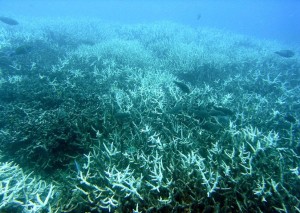
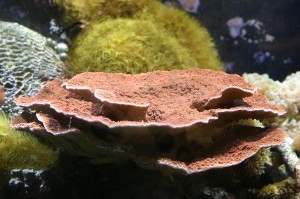
Algae are also responsible for the beautiful colours of some sea slug species. In contrast to the harmonious symbioses between algae and corals, some sea slugs directly consume algae and use the algae’s pigment to produce remarkable body colors which can either be apatetic or aposematic in their functions.
Sometimes, however, algal colouration is not always welcome. Blooms of intensively growing algae can produce very ugly and unpleasant colours. Cyanobacterial blooms are one of the most common environmental problems in freshwater systems including eutrophic lakes, reservoirs and the backwater zone of rivers. During bloom periods, lake surfaces can be partly or fully occupied by cyanobacterial cells, creating an unappealing dark blue-green colour.
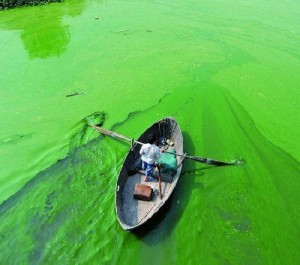
Other algal groups, such as some dinoflagellates, are commonly found in marine blooms. The colours of algal blooms in marine systems are more diverse depending on the type and density of bloom species. However, one kind of bloom, Noctiluca scintillans, is especially unattractive. Proliferation of this species creates a bloody red colour remarkably similar to the one described in Exodus, which may be one of the earliest recorded instances of a red tide (“… and all the waters that were in the river turned to blood. And the fish that were in the river died, and the water stank …”).
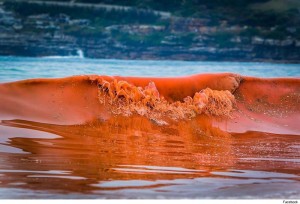
Author
Qiang Yang: qiang.00.yang[at]gmail.com
Photo credits
Brian Skerry, National Geographic
Wikimedia commons
finance.ifeng.com
coolage.in

